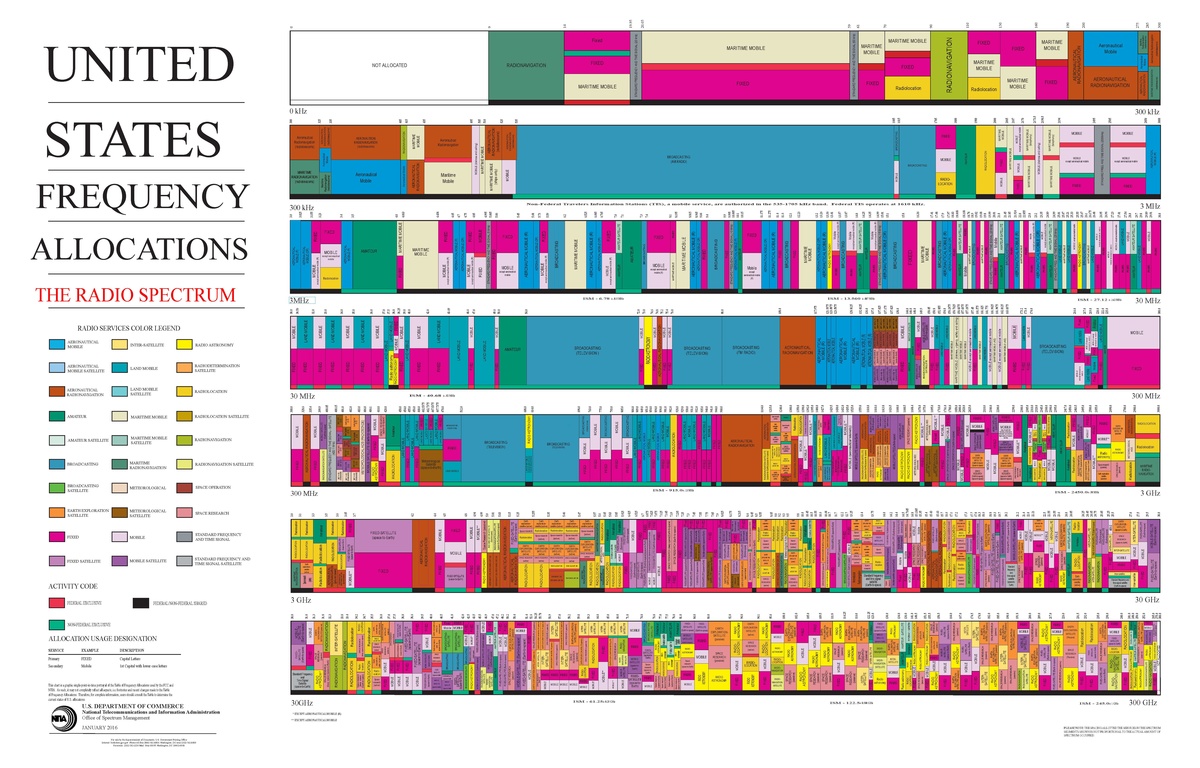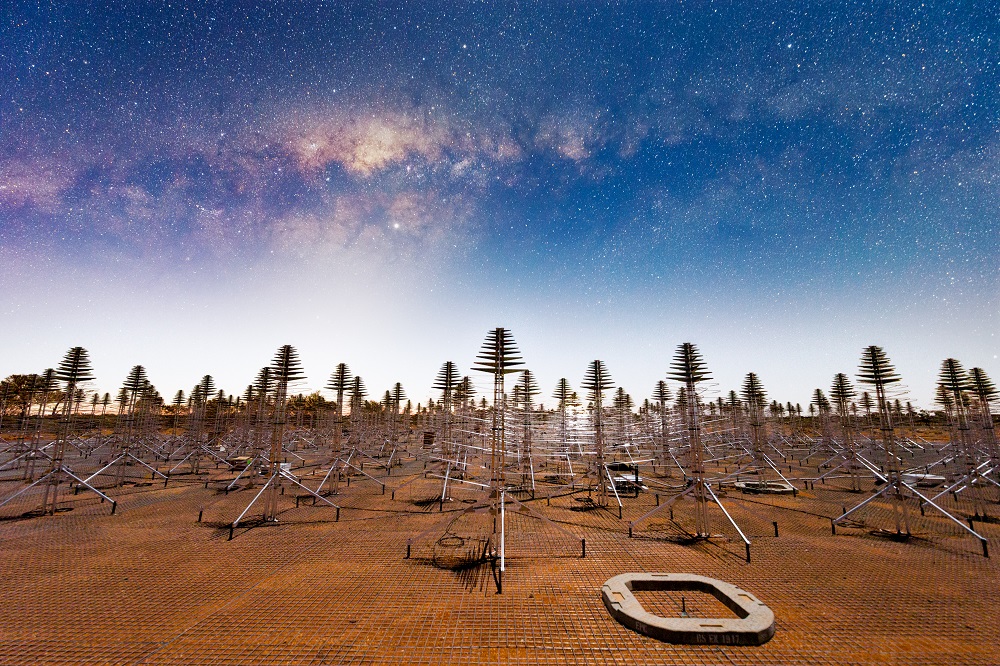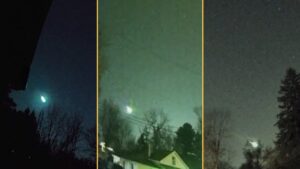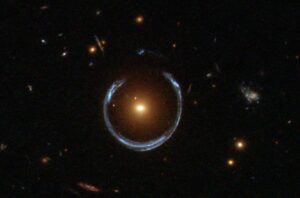Specialists at Australia’s Square Kilometer Array (SKA) released a report this week showing Starlink’s unexpected impact on radio astronomy. Despite national and international protections against radio emissions in certain bands, Starlink is clogging the skies with electromagnetic pollution.
A crowded spectrum

The crazy-complicated spectrum allocations in the United States. The different colors show different allocations and who is allowed to broadcast/receive in a given band. Photo: Wikimedia Commons
Light pollution stretches far beyond the hazy glow of a city on the horizon. Down in the radio portion of the electromagnetic spectrum, governments barter sections of light. Large portions of bandwidth stay reserved for the military, while others get auctioned off (sometimes literally) to communications companies. Squeezed in between these chunks of spectrum lie bands for public broadcasting, HAM radio, and science.
Governments, corporations, and private citizens are supposed to stay away from protected bands so that radio telescopes can observe in peace. When the Starlink satellites launched, SpaceX collaborated with key radio astronomy observatories to avoid broadcasting while transiting above telescopes. Strategies include turning off Starlink WiFi services completely in certain regions of the sky.
The resulting disruptions to Starlink operations are not insignificant. Spectrum management, especially in the United States, involves give-and-take on both sides. But American observatories have the benefit of observing at mid- to high-frequencies, at least by radio standards. Those frequency bands are less polluted than low frequencies, because emitting at low frequencies takes less energy and so costs less.
‘Unintended electromagnetic radiation’
If corporations and the military ignored protected bands, it would cause serious problems for radio astronomy. But a new study by engineers at the SKA suggests unintended electromagnetic radiation, or UEMR, may be a bigger issue than intended radiation.
The SKA is still under construction. When completed, it will be the most powerful radio telescope in the world. The low-frequency part of the telescope (SKA-Low) is designed to go after trace echoes from when matter began to coalesce 13 billion years ago. SKA-Low looks odd even by the standards of radio telescopes. A thick forest of metallic Christmas trees in the Australian desert maximizes sensitivity to faint signals.

Low-frequency radio telescopes differ dramatically in design from the classic dish types used in higher radio frequencies. Photo: Michael Goh/ICRAR/Curtin
But the new era of radio telescopes is butting up against a new era of satellites. There are more satellites in orbit than ever before, including massive networks of related satellites called constellations. With 7,000 satellites in Low Earth Orbit, Starlink is the biggest constellation.
As they transit above SKA-Low, Starlink satellites release radio emissions through multiple protected bands. In a pre-print of their study, the SKA-Low team reports 112,534 intrusions of Starlink satellites in their radio images. Their month-long study showed that 30% of all Starlink satellites in the sky at the time appear in their data.
Most of this emission seems to be accidental. UEMR from Starlink interfering with radio astronomy isn’t unprecedented. During the initial launch phase, radio astronomers found that the propulsion system on the satellites emitted at unexpectedly low frequencies, decreasing the quality of astronomical data in an already polluted band. But the satellites had all been launched at the time of this new study. So where is all this radio pollution coming from?
No answers, and no regulation
We don’t know the various origins of the UEMR the SKA-Low team observed, except for one feature at 99.7 MHz. If that sounds like an FM radio band, it’s no coincidence. Starlink satellites bounce FM radio shows back down to the Earth. For telescopes carefully located in radio-quiet zones, that’s not ideal.
Fixing this issue is particularly crucial to the success of SKA-Low, which seeks to look further back in time than any telescopes in a similar radio band. Signals from the early universe are very faint, and Starlink satellites are not.
Unfortunately, the codes governing spectrum use only ban intended radio emission in protected bands. Consider a hyperbolic analogy: Imagine if murder were illegal, but manslaughter wasn’t. Spectrum experts and regulators are currently discussing how to address this issue. For now, though, as long as Starlink is here, so are the unintended radio emissions.






